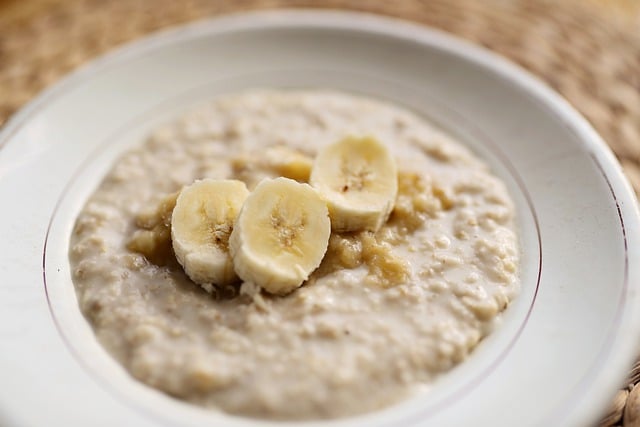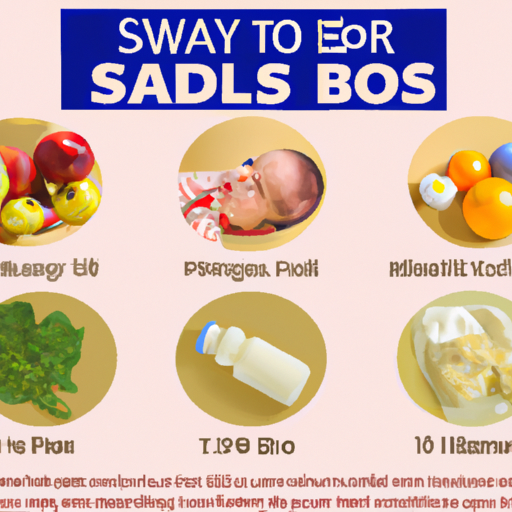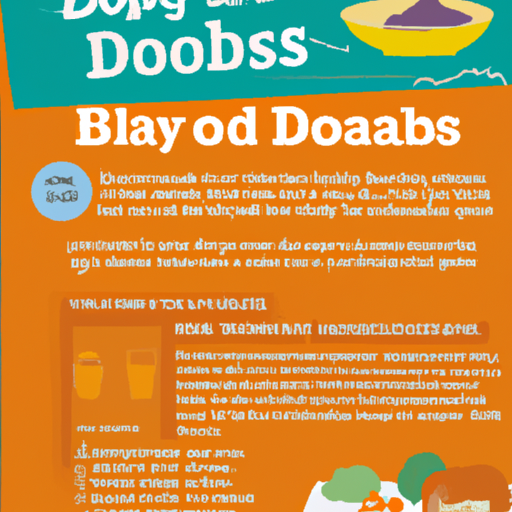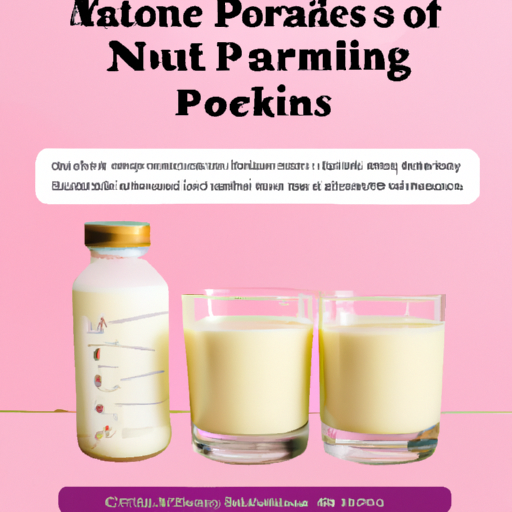Are you wondering how to introduce solid foods to your baby? Well, you’re in the right place! Figuring out when and how to start your little one on solid foods can be a bit overwhelming, but don’t worry, we’ve got you covered. In this article, we will walk you through the process and provide you with all the information you need to make this milestone as smooth as possible for both you and your baby.
From when to start, to what foods to introduce first, and even some helpful tips and tricks along the way, you’ll find everything you need to know right here. So let’s dive in and make this transition to solid foods an exciting and enjoyable experience for your little one!
If you’re curious about how to introduce solid foods to your baby, you’ve come to the right place. In this article, we will be sharing all the essential information and tips you need to know for a successful transition. We understand that starting your baby on solid foods can be both exciting and nerve-wracking, especially if you’re a first-time parent. That’s why we’re here to help! We’ll cover the best time to start introducing solids, what foods to begin with, and how to ensure a smooth transition for your baby.
So keep reading and get ready to embark on this new stage of your baby’s development! Introducing solid foods to your baby is an exciting milestone in their development. It’s a significant transition from relying solely on breast milk or formula to starting on a journey of exploring new tastes and textures.
But when is the right time to start, and what foods should you choose? In this article, we will guide you through the process of introducing solid foods to your baby, covering everything from signs that your baby is ready to the best techniques for feeding and establishing mealtime routines. So let’s dive in!

When to Start Introducing Solid Foods
Signs that your baby is ready for solid foods
One of the first questions parents often ask is, “When should I start introducing solid foods to my baby?” The American Academy of Pediatrics recommends starting around six months of age. However, it’s important to look for signs of readiness rather than strictly adhering to an exact age.
Some signs that your baby may be ready for solid foods include:
- Sitting up with minimal support
- Showing interest in the food you are eating
- Being able to hold their head steady
- Having good coordination to move food from the front to the back of their mouth
- Exhibiting a decreased tongue thrust reflex (pushing food out of the mouth with their tongue)
It’s essential to remember that every baby is unique, and readiness for solid foods can vary. Consult with your pediatrician to ensure your baby is ready before introducing solids.
Recommended age to start introducing solid foods
While six months is a typical age to begin introducing solid foods, the specific timing may vary. Some babies may show readiness signs earlier, while others may need more time. By waiting until around six months, you can ensure that your baby’s digestive system is more mature, reducing the risk of allergies and other potential complications.
Choosing the Right First Foods
Importance of starting with single-ingredient foods
When it comes to first foods for your baby, it’s essential to start with single-ingredient foods. This approach allows you to identify any potential food allergies or intolerances more easily. Pureed fruits and vegetables are ideal as the first foods because they provide essential nutrients in a easily digestible form.
Examples of nutritious first foods for babies
Here are some nutritious first foods to consider for your baby:
- Avocado: Rich in healthy fats and easy to mash or puree.
- Sweet potatoes: Packed with vitamins and minerals, sweet potatoes can be cooked until soft and mashed.
- Bananas: A great source of potassium and easy to mash with a fork.
- Butternut squash: Nutrient-dense and naturally sweet, it can be pureed or mashed for your baby.
As your baby becomes more comfortable with single-ingredient foods, you can gradually introduce a variety of fruits, vegetables, and eventually proteins like pureed lean meats or cooked legumes.
Preparing Solid Foods for Your Baby
Mashing and pureeing fruits and vegetables
When preparing solid foods for your baby, it’s important to ensure that the texture is appropriate for their stage of development. For younger babies, such as those just starting on solids, purees should be smooth and easily swallowed. You can achieve this by mashing or pureeing cooked fruits and vegetables. Using a blender or food processor can help create a smooth consistency.
Cooking and softening grains and legumes for babies
Grains and legumes are important sources of nutrients and can be introduced to your baby’s diet as they progress in their solid food journey. To make these foods more suitable for your baby’s developing digestive system, cook and soften them before mashing or pureeing. For example, you can cook rice or quinoa until it’s soft and easily mashed with a fork. Similarly, legumes like lentils or chickpeas can be cooked until tender and then pureed to a smooth consistency.
Introducing Allergenic Foods
Guidelines for introducing common allergenic foods
Introducing allergenic foods to your baby can sometimes be a source of concern for parents. However, recent research suggests that introducing potentially allergenic foods early in your baby’s life may actually help reduce their risk of developing allergies.
It’s important to note that while early introduction may help reduce the risk, it does not guarantee your baby will not develop an allergy. Always consult with your child’s pediatrician before introducing any allergenic foods.
Some common allergenic foods include:
- Peanuts
- Eggs
- Dairy products
- Soy
- Wheat
When introducing these foods, it’s recommended to start with a small amount and monitor your baby closely for any signs of an allergic reaction.
How to monitor for allergic reactions
When introducing allergenic foods, it’s important to be vigilant for any signs of an allergic reaction. Common symptoms of an allergic reaction include:
- Rash or hives
- Swelling of the face, lips, or tongue
- Difficulty breathing or wheezing
- Vomiting or diarrhea
- Persistent coughing or hoarseness
If you notice any of these symptoms, seek medical attention immediately. It’s also a good idea to introduce new allergenic foods during the daytime, when medical professionals are more readily available to assist if needed.

Baby-Led Weaning
What is baby-led weaning
Baby-led weaning is an alternative approach to introducing solid foods that allows your baby to take control of their eating experience. Instead of purees, baby-led weaning involves offering your baby age-appropriate finger foods and allowing them to self-feed from the start. This method encourages the development of oral motor skills and promotes independence in eating.
Benefits and considerations of baby-led weaning
Baby-led weaning offers several benefits, including:
- Developing fine motor skills and hand-eye coordination
- Encouraging a wider variety of textures and tastes
- Promoting self-regulation of appetite
However, it’s important to note that baby-led weaning may not be suitable for all babies, especially those who have developmental delays or specific medical conditions. Always consult with your pediatrician to determine if baby-led weaning is appropriate for your child.
Feeding Techniques and Safety
Introducing utensils and cups to your baby
As your baby progresses in their solid food journey, it’s important to introduce them to utensils and cups. This can help develop their fine motor skills and promote independence in eating. Consider offering small, baby-friendly spoons and cups with handles that are easy for them to grasp.
While it may be messy at first, allowing your baby to explore and practice using utensils will eventually lead to better feeding skills.
Ensuring food safety during mealtime
Food safety is paramount when introducing solid foods to your baby. Here are some tips to ensure food safety during mealtime:
- Wash your hands thoroughly before handling food for your baby.
- Use clean cutting boards and utensils to prepare and serve their food.
- Avoid using honey, as it can cause infant botulism.
- Avoid giving your baby foods that pose a choking hazard, such as whole nuts or chunks of raw vegetables.
It’s also important to practice safe storage and handling of leftover baby food, keeping it refrigerated and discarding any uneaten portions after a certain period.

Establishing Mealtime Routines
Creating a consistent mealtime schedule
Establishing a consistent mealtime schedule can be beneficial for both you and your baby. By providing regular meals and snacks, you help your baby develop a sense of routine and expectation around mealtime.
Offering meals at similar times each day can also help regulate your baby’s appetite and prevent excessive snacking or grazing. Aim for three meals a day, with additional snacks as needed.
The importance of family meals
Incorporating your baby into family meals is also essential for their social and emotional development. Sitting together at the table creates a sense of togetherness and allows your baby to observe and learn from your eating habits.
It’s a great opportunity to model healthy eating behaviors and introduce a variety of foods to your baby. Encourage conversation and engagement at the table, making mealtimes an enjoyable and positive experience for everyone.
Dealing with Feeding Challenges
Addressing picky eating habits
It’s not uncommon for babies and toddlers to develop picky eating habits as they explore new foods. If your baby starts displaying food refusal or preferences, here are some strategies to address picky eating:
- Offer a variety of foods, including those your baby may have initially refused. It can take several exposures for them to accept new flavors and textures.
- Continue to provide a balanced diet and avoid succumbing to the pressure of catering to their preferences with unhealthy options.
- Make mealtimes enjoyable and positive. Avoid forcing or pressuring your baby to eat; instead, create a relaxed environment where they can explore and enjoy their food.
Remember, picky eating is often a temporary phase that most children outgrow with time and patience.
Handling food refusal and regression
Sometimes, babies may refuse previously accepted foods or display regression in their eating patterns. This can be frustrating for parents, but it’s essential to remain calm and patient.
If your baby refuses a particular food, try offering it again at a later time or in a different form. For example, they may reject mashed sweet potatoes but enjoy them as finger foods. Being flexible and adapting to your baby’s preferences can help overcome food refusal or regression.

Nutritional Requirements for Babies
Understanding the different nutrient needs of babies
As your baby begins to eat solid foods, their nutritional needs start to shift. While breast milk or formula remains an essential part of their diet, solid foods provide additional nutrients necessary for growth and development.
Infants need a balance of macronutrients (carbohydrates, fats, and proteins) and micronutrients (vitamins and minerals) for optimal health. Offering a variety of foods from different food groups helps ensure your baby receives the necessary nutrients.
Balancing breast milk/formula and solid foods
Breast milk or formula should remain the primary source of nutrition for your baby throughout the first year. As your baby increases their intake of solid foods, gradually reduce the number of milk or formula feedings accordingly.
It’s important to continue breastfeeding or providing formula on demand to meet your baby’s individual needs. Always consult with your pediatrician to ensure your baby is receiving adequate nutrition and to address any specific concerns.
Conclusion
Summary of key points discussed in the article
Introducing solid foods to your baby is an exciting milestone, and it’s crucial to do it at the right time and with the right foods. Signs of readiness, such as sitting up and showing interest in what you’re eating, are essential indicators that your baby is ready to venture into the world of solid foods. Starting with single-ingredient purees and gradually introducing a variety of foods ensures proper nutrition and helps identify any potential allergies.
Whether you choose traditional puree feeding or opt for the baby-led weaning approach, providing a safe and engaging mealtime environment is crucial. Establishing consistent mealtime schedules, incorporating your baby into family meals, and maintaining good food safety practices create a positive foundation for your baby’s eating habits.
Feeding challenges, such as picky eating and food refusal, can be addressed with patience and persistence. Remember to offer a variety of foods, remain relaxed during mealtimes, and adapt to your baby’s preferences.
Lastly, remember to balance breast milk or formula with solid foods, meeting your baby’s changing nutritional needs while still ensuring they receive the appropriate amount of milk or formula.
Encouragement to gradually introduce solid foods to your baby
Introducing solid foods to your baby is an exciting journey full of new tastes and textures. As you navigate this adventure, trust your instincts, follow your baby’s cues, and consult with your pediatrician along the way. Remember, every baby is unique, and their progress may vary. Enjoy the process and embrace the mess, knowing that you are nurturing your baby’s growth and fostering a lifetime of healthy eating habits.






